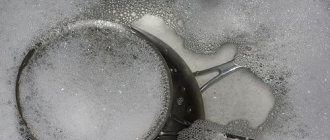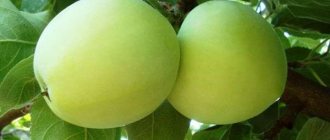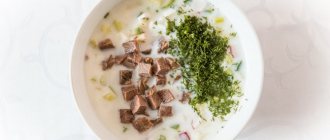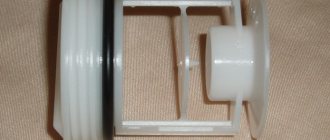Description
Citric acid is a food additive used in cooking and everyday life, which was first isolated by a Swedish pharmacist named Karl Scheele in early 1784. In its pure form, which is familiar to people, the additive was obtained only in 1960 in England from calcium citrate. In everyday life, citric acid is used instead of chemicals to clean tiles, bathrooms, etc. from dirt. In cooking, the product is widely used in the preparation of drinks, desserts, preserves, as well as first and second courses. In addition, the nutritional supplement is used by women in cosmetology, as well as for weight loss.
Apple vinegar
Already from the name itself you can tell that it is made from apples. This product is very healthy and is used for preparing various dishes or even in cosmetology.
Despite all its advantages, apple cider vinegar is not recommended for canning.
If a canning recipe requires the addition of apple cider vinegar, it is better to prepare a small amount of salad or marinades so that they can be consumed in a short time.
The short shelf life is compensated by its amazing taste; canned tomatoes or peppers acquire a new vinegary-fruit aroma, which in the blink of an eye will spread throughout the apartment. READ ALSO: Tomatoes for the Urals in a greenhouse: varieties of tomatoes, recommendations for growing, photos, videos - greenhouse tips
a brief description of
Citric acid is added to food to regulate acidity. During preservation, the product serves as protection against the spread of microorganisms that may appear in the jar during the fermentation process and cause harm to the body.
How and from what are they made?
Initially, citric acid was made from the unripe fruits of the lemon tree. The additive can be obtained from the juice of not fully ripened lemons, citrus plants, Chinese lemongrass, berries, as well as from coniferous tree species.
On an industrial scale, a food additive is made by complex synthesis of sugary substances (or simple sugar) with a strain of mold.
What does it look like?
The additive is a snow-white powder with dense crystals that dissolve well in liquid. Sold in sealed packages of various sizes.
Taste
The product has a pronounced sour taste, similar to concentrated lemon juice.
Smell
Citric acid has a subtle sour aroma that can only be detected when you first open the package. After this, the smell of the food additive is practically not felt.
Clean product
If we take 100% acid, it is a very interesting product. When cooled to 17 degrees, it becomes not just icy, but crystallizes. This amazing phenomenon cannot be observed at home, because it is not sold in this form in the store. In home cooking we do not encounter such a substance. Typically a 70% acid solution is required. But most often housewives deal with an aqueous solution called table vinegar. Its concentration ranges from 3 to 13%, and this is quite enough for preparing most dishes. You can use citric acid instead of vinegar. Let's look at the proportions a little lower. In the meantime, let's decide what manipulations need to be done with the essence to get a product of the required concentration.
Read also: When does a belly appear during pregnancy?
How to choose citric acid?
The first thing you should pay attention to when purchasing a dietary supplement is the seal of the bag. © https://ydoo.info/product/limonnaya-kislota.htmlProducts with damaged packaging will not meet quality standards. In addition, the packaging must be dry, and the crystal powder inside must be free-flowing, without lumps or compactions. The formation of lumps indicates that the packaging was damaged by moisture during storage or transportation, and therefore the taste and properties of citric acid have deteriorated.
The second important indicator is expiration date. Visually, the product will not change in any way after the recommended storage period expires, but it will become completely useless and almost tasteless.
How to make citric acid at home?
You can prepare the flavoring additive yourself, but it is a long and labor-intensive process.
One lemon (ripe) contains approximately 7% acid, so to prepare the supplement you need to take lemons based on how much citric acid you want to get out of it.
For cooking, you will need to squeeze the juice of lemons; it is best to use a juicer to get the maximum amount of liquid. You need to prepare two containers: small and large. Pour water into the large one to create a water bath, pour lemon juice (cleaned of seeds and pieces of pulp) into the small one. A large container should be placed on the fire, the water in it should be brought to a boil and covered, placing a smaller container inside. You need to evaporate the juice over low heat until there is no liquid left at all. It is not advisable to leave the water bath unattended; in addition, the juice must be stirred periodically.
The resulting acid will have a less rich taste than purchased acid, so it will need to be added to dishes in slightly larger quantities.
How to dilute dry powder
What to do if the recipe specifies essence? You can use the following memo and use it to perform not too complicated calculations. The ratio of essence and table vinegar with citric acid is considered. Dry crystals need to be diluted with plain water. In order to obtain a 70% essence substitute, you will need to dilute a tablespoon of acid in two tablespoons of water. This solution must be taken in accordance with the recipe, how much essence is indicated. For example, a teaspoon.
- if you add one citric acid to 14 parts of water, you will get a solution equal to 9% table vinegar;
- for an analogue of 6% you will need to take 1/22;
- 5% vinegar is obtained by mixing 1 part citric acid and 26 parts water;
- 4% - dilute 1 to 34;
- 3% - 1 in 46.
Read also: Winter tire test 2021 2019 auto review
Now you know how much citric acid instead of vinegar will be needed to prepare the desired solution. What’s remarkable is that no special conditions are needed. Just a clean bottle, water and lemon powder, which is available in any store. In terms of cost, such a solution will be even cheaper than vinegar.
How to store?
To preserve the taste and beneficial properties of citric acid, you need to follow the recommendations regarding storage time and place.
Conditions
The nutritional supplement should be stored in hermetically sealed packaging. After opening, the package can be closed with a clothespin or a special clip. Alternatively, you can pour the crystalline powder into a glass or ceramic jar with a tight lid or into a vacuum bag with adhesive tape.
The additive should be kept in a dry and cool place, avoiding moisture and direct sunlight.
Term
The shelf life of the product is indicated on the packaging, on average it is from 1 to 2 years. Using an expired product will not cause harm to health, but it will not give the desired result.
Culinary tricks
Citric acid is a product that must be used correctly in cooking. Every housewife should know some tricks of use.
Why do they add it to dishes and drinks?
Citric acid is added to dishes and drinks to improve or adjust the taste (if the food is over-sweetened or lacks sourness); the additive is also used as a preservative and acidity regulator.
How to dilute acid to lemon juice?
To make acid-based lemon juice, you should adhere to the following proportions: use 4 g of additive per 100 ml of water. But in general, the amount of acid depends on taste preferences, since the juice can be made more sour or more tender.
On average, you can use 5 g (or 1 tsp) of citric acid instead of 1 small lemon.
How to make pop from citric acid?
To make the pop, you will need citric acid, powdered sugar, baking soda and water. In a clean glass or ceramic container, mix 1 tsp. soda with 3 tsp. acid until a homogeneous mass is formed, then add 1 tbsp. l. powdered sugar and mix again.
The workpiece is diluted at the rate of 1 tbsp. l. dry mixture per 200 ml of water.
The dry mixture can be made in advance and stored in a glass jar with a tight lid (in a cool, dark place) for 1 month.
When and how much to add?
The acidic crystalline powder is added during the preparation of many dishes, such as borscht, baking dough, in alcoholic and sweet drinks, as well as in canned food.
In borscht
When preparing borscht, acid is used not only to add a piquant taste, but also to preserve the bright color of the beets. For a medium pan, one small pinch of acid is enough, which must be added during the preparation of frying vegetables, immediately after the beets are placed in the pan.
In the mash
Citric acid is added to the mash at the stage of inverting sugar into syrup. The flavoring additive is taken in the proportion of 4 g of acid per 1 kg of sugar and 1 liter of water.
In jam
When canning sweet berry jam, citric acid is added not only as a means of preventing fermentation, but also to improve the taste, so that the dessert does not turn out too cloying and does not begin to sugar.
In strawberry, apricot, apple and pear jam, which is prepared in a 1:1 ratio of berries/fruits and sugar, you need to add ½ tsp. acid per 1 kg of the main ingredient. The food additive is introduced at the very last stage, 5-10 minutes before the jam is ready.
Into the wine
Citric acid is added not to the finished wine drink, but to the wort in the amount of 2 g per 1 liter of wine. In rare cases, acid can be added to adjust the taste of the finished wine, but it is better to do this in advance so as not to spoil the drink.
In vodka or alcohol
Alcoholic drinks such as vodka, which are often made by diluting alcohol, add citric acid to soften the taste. Acid is added in an amount of 0.3 g per 10 liters of aqueous-alcoholic liquid.
In compote for the winter
To ensure that the compote has a refreshing taste with pleasant, subtle sour notes, citric acid is added during preparation, which also acts as a preservative.
For 1 liter of compote, the preparation of which took 150 g of berries and 100 g of sugar, you need to add 2 g of citric acid.
In lecho
When preserving lecho, instead of vinegar (9 percent), you can use citric acid. For 3 kg of pepper and 0.5 kg of tomatoes you need to add 12 g of acid. Acid is introduced along with peppers and tomatoes at the first stages of cooking, before stewing begins.
Into the dough
Adding acid to the dough helps improve the quality of baked goods, its taste and aroma, and also makes the crumb more elastic, airy and lighter. Dough to which citric acid has been added rises faster.
In yeast dough for about 1 kg of flour, it is enough to add a quarter teaspoon of acid. The powder is added along with salt and sugar before adding flour.
For a liter jar of cucumbers or tomatoes
To protect the preparations and avoid food spoilage, you can add a little citric acid to the marinade. The calculation for canning tomatoes and cucumbers is as follows: 0.5 tsp is used per 1 liter jar. acids.
How to remove the taste of citric acid?
If an excessive amount of citric acid was added during cooking, causing the dish to become sour, you can try to neutralize the taste by adding sugar, natural honey or cream.
The choice of neutralizing ingredient depends on the dish it is added to. You can add sugar and cream to the borscht. Honey is suitable for sweet drinks and desserts.
What can I substitute in the recipe?
The easiest way is to replace the acid with lemon or lime juice at the rate of 1 tsp. dietary supplement is equal to the juice of 1 medium fruit.
When preparing desserts, you can use orange or tangerine juice instead of citric acid. You can also add grated citrus zest, cinnamon or vanillin to the dough.
In canning, instead of acid, you can use orange and lemon zest, as well as citrus fruit juice or applesauce. In addition, sour berries such as cranberries, red currants and lingonberries can be used to pickle cucumbers, tomatoes, peppers or zucchini.
Substitution with vinegar
As a rule, the lack of lemon is a serious problem when preparing dessert dishes: pastries, cakes and various creams. However, skillful housewives have long found a way out of the situation and do not worry when there is no citrus at home, and do not run to the store to complete their idea.
You can easily replace lemon juice with vinegar. Almost every home has a wine or apple store. In this case, 1 tbsp will be enough. l. natural vinegar.
In extreme cases, a 6% concentration of an ordinary table will do. It can be used for making sweet creams and for seasoning cold dishes. Table vinegar is mixed with olive oil. A particularly tasty dressing is obtained when preparing light salads in the summer. If a 9% solution is used, it is recommended to dilute it with water in an equal ratio.
Five tablespoons of regular table vinegar can replace half a cup of citric acid. That is, this method turns out to be more economical.
Volume to weight ratio
You can measure citric acid in grams without scales using small and large spoons:
- in a tablespoon – 15 grams;
- in a dessert spoon – 10 grams;
- in a level teaspoon – 5 grams of acid.
The juice of one lemon is equivalent to approximately 5 g of citric acid. An average pack of acid contains 50 g. Also on sale are small bags weighing 10–25 g, medium bags weighing 50–100 g, and large bags weighing 250 g.
How to dilute vinegar essence? (to get vinegar)
How to dilute vinegar from 70% vinegar essence:
9% vinegar, you need to take one part of the essence and add seven parts of water (1 tablespoon of essence and 7 tablespoons of water)
6% vinegar - add 11 parts of water to one part of essence (1 tablespoon of essence and 11 tablespoons of water)
5% vinegar - add 13 parts of water to one part of essence (1 tablespoon of essence and 13 tablespoons of water)
4% vinegar - add 17 parts of water to one part of essence (1 tablespoon of essence and 17 tablespoons of water)
3% vinegar - add 23 parts water to one part essence (1 tablespoon essence and 23 tablespoons water)
So, if you need 1 tablespoon of 70% vinegar essence, but you only have 5% vinegar, and its concentration is 13 times less, then you need to add 13 tablespoons of 5% vinegar.
Another point to consider is that if the recipe says 1 tablespoon of vinegar essence 70%, and you replace the essence with vinegar in the required proportion, then take not 1 liter of water, but several tablespoons less. That is, 5% vinegar 7 tablespoons and MINUS 13 tablespoons of water.
Read more: Ignition coil Kalina 16 valve
If you need to add 1 tablespoon of 70% vinegar essence, and you only have 9% vinegar, then you need to add 7 tablespoons of 9% vinegar.
Benefits and harms for the human body
Citric acid is a useful food additive that is even included in baby food. Regular consumption of water with acid (2 g per 200-250 ml) has a beneficial effect on the health of both men and women.
The daily intake of acid for an adult is 4 g, for a child - 60 mg per 1 kg of weight.
The benefits of consuming the dietary supplement are as follows:
- A glass of warm water with citric acid will help relieve sore throat caused by sore throat. The drink also removes toxins and harmful bacteria from the intestines and cleanses the liver. Lemon pop helps relieve heartburn.
- Blood vessels and arteries are cleansed, thereby reducing blood pressure.
- Rinsing your mouth with acidic water helps kill bacteria and germs and freshens your breath.
- The likelihood of joint disease, as well as ligaments and tendons, is reduced.
- The immune system is strengthened and the body’s healing process during viral diseases is accelerated.
- Metabolism speeds up if you drink a glass of water with citric acid on an empty stomach.
- Appetite appears, which is useful for people who have suffered a serious illness or surgery.
- The condition of the skin improves, becoming firmer, more radiant and elastic.
- A drink with citric acid helps get rid of a hangover as it detoxifies the body.
During pregnancy, women can drink tea with the addition of a small amount of citric acid (2-3 g) to get rid of heartburn and swelling. In addition, the drink can be used as an alternative to cold or flu pills.
Newborn babies can receive citric acid particles along with mother's milk to improve immunity. A light drink with acid also helps produce lactose.
It is not recommended for a child to take the nutritional supplement in its pure form, but if it is indicated in baby food, then it can be eaten, the main thing is not to exceed the daily intake (taking into account the baby’s weight). In addition, a solution made from citric acid (5 g) with larkspur (10 g) and boiling water (250 ml) and infused for 6 hours will help cope with such a common childhood ailment as lice and nits. It should be applied to the roots and then combed out.
Citric acid causes harm to the body if it is consumed by people with:
- allergies;
- stomach ulcer;
- inflammation of the oral cavity;
- gastritis with high acidity.
You need to be careful not to get acid into your eyes and nasopharynx, because this can cause a burn.
Exceeding the daily dose of flavor additive consumption can cause serious poisoning, heartburn, stomach pain, and irritation on the skin and gastric mucosa.
The lethal dose of citric acid for an adult is 20 grams taken at a time in its pure form.
Preparing water with citric acid and cinnamon for weight loss: recipe, use
Lemon with cinnamon
Water with citric acid for weight loss helps normalize blood sugar. This is important, especially if there are diabetics in your family or there is a real chance of developing this disease. Vitamin C in the drink helps improve metabolism, as well as improve immunity and strengthen the body as a whole.
To put it simply, citric acid does not allow you to gain weight quickly. When there is a lot of glucose in the body, fat is easily formed and the person becomes fat. Lemon juice significantly slows down this process.
As for cinnamon, it reduces the feeling of hunger and therefore fat does not form either. So, by mixing these two ingredients, you can eat less and still feel good.
It is not recommended to drink the drink constantly. First of all, the effect will gradually decrease, and secondly, some diseases may worsen in you. If your health is good, then the course can be carried out for two weeks and then take a break of the same length.
You should also understand that when drinking lemon water with cinnamon, it is strictly forbidden to fast. It is important to eat right, and drink a drink between meals. Moreover, while losing weight, eliminate alcohol and harmful carbohydrates.
The drink itself is very easy to prepare:
- First, pour boiling water over a teaspoon of cinnamon.
- Next, add 0.5 teaspoon of citric acid, or the juice of half a lemon.
- Leave the entire mixture to steep for two hours.
You can drink the product hot or cold as desired. By the way, it is allowed to prepare the drink in advance, but no more than 3-4 days.
You will get more noticeable results if you exercise and eat right. Also, avoid drinking coffee while using lemon-cinnamon soda. Otherwise, a very large load will be placed on the stomach, especially if there is a tendency to gastritis.
Citric acid for weight loss
A glass of warm water with ½ tsp can help get rid of extra pounds. citric acid, drunk half an hour before breakfast. Such a simple drink will speed up your metabolism, which in turn will have a positive effect on your figure.
It is impossible to lose weight with citric acid alone, since it is an auxiliary product and not the main one. To achieve results, you need to give up fatty foods, reduce the amount of flour and sweets, drink 2 liters of purified water per day and move more.
In addition, it is recommended to eat fruits and berries that contain acid, such as oranges, tangerines, and black currants.
Replacing wine vinegar
In salad
- Lemon acid. This is an alternative for all occasions. If you need to replace a 9% wine vinegar product, then 1 tsp. citric acid is diluted with 14 tbsp. l water; for a six percent water option you will need 22 tbsp. l.
- Grape juice. Its quantity increases 3 times, and to enhance the taste, seasonings must be added to the grape juice.
- Dry wine. It will be much better if you dilute it with grape juice in a 1:1 ratio.
- Any vinegar of natural origin. The product obtained from vinegar essence according to the above recipe can only be used in a desperate situation.
- Freshly squeezed lemon juice, which can be diluted with either grape juice or white or red wine.
In recipes
If we are talking about culinary recipes, then grape vinegar is replaced with any other, as well as with lime or regular lemon juice, grape juice, white or red wine. If we are talking about cosmetic recipes, then there is only one replacement for this product. And this is apple cider vinegar, because it is most similar in composition and properties, but provided that it is natural.
In the marinade
It is appropriate to marinate expensive types of fish or meat in balsamic, the only problem is that this product is available only to a select few. Therefore, grape vinegar for marinade can be easily and inexpensively replaced with other varieties, in a 1:1 ratio (provided that the concentrations are the same, and if they are different, then a recalculation is made). When canning, vinegar essence is most often used, which is diluted to the required concentration. If you doubt the relevance of the information presented, you can use the table that is presented on each bottle of essence. It is noteworthy that any vinegar can be easily replaced with citric acid.
In baking
What function does this component perform in baking? It extinguishes the soda and thereby helps loosen the dough. Its taste and aroma properties have virtually no effect on the taste and smell of pies, cakes and cookies, which is explained by the low concentration of the product in the total mass.
As a substitute, you can choose any other vinegar product, lemon juice or acid diluted with water (1 teaspoon per 14 tablespoons of water), and some take a simpler route - buy ready-made baking powder.
We have considered a sufficient number of options for replacing wine (grape) vinegar with analogues..
Use in cosmetology
Adding citric acid to homemade masks helps whiten the skin, make it smoother and firmer, and also remove traces of acne. Using acid, you can not only lighten your hair, but make it silky and shiny. In addition, the dietary supplement helps remove rough skin from the feet and heels.
For hair
Citric acid can be a good alternative to expensive hair rinse. It will not only remove oiliness, but also lighten your hair by 1 or 2 tones. To prepare the wash, you need to dilute 2 tsp. citric acid in 2 liters of warm water. You need to rinse your hair after washing your hair. Lightening will occur after 3-4 procedures.
In addition, you can make a mask based on a dietary supplement that will help strengthen your hair, making it stronger and healthier. The mask is prepared from 0.5 tsp. acid, 1 egg yolk, 1 tsp. honey and 2 tsp. aloe juice All components are mixed well, and then the mixture is applied to clean hair and distributed over the entire length. After this, the head is wrapped in a warm cloth for half an hour. After 30 minutes, the hair is washed with warm water or rinsed with St. John's wort tincture.
For facial skin
The nutritional supplement is an indispensable component of home cosmetics, as it can help get rid of blackheads, even out skin tone, lighten age spots and exfoliate, helping to exfoliate dead cells, which will make the skin softer and more elastic.
Lightening pigment spots
To prepare a brightening lotion, you need to mix a beaten chicken egg, 0.25 tsp. citric acid and 10 drops of 3 percent peroxide. Using a cotton swab, apply the lotion to problem areas and wash off with warm water after 10 minutes. As a result of using the lotion, age spots will become lighter, which will even out your skin tone.
The procedure should not be performed more than once a week for people with dry skin and 3 times a week for oily skin.
Fighting acne and blackheads
To make lotion, you need to mix 1 tsp. citric acid with 2 tsp. natural honey. Apply the mixture to cleansed skin using circular massage movements and rinse with cool water after 20 minutes. As a result, the skin will be cleared of acne and blackheads. After the procedure, there is no need to lubricate your face with anything so as not to clog the pores.
Peeling
At home, fruit peeling can be carried out after first checking the skin for a reaction from interaction with citric acid. To do this, simply apply a small amount of acid to the area of skin under the chin and wait a couple of minutes. If there is no negative reaction, then the procedure can be carried out.
People with sensitive skin should dilute citric acid with olive oil. In addition, peeling should not be carried out if the skin has wounds, irritations or inflamed areas.
Before peeling, you need to cleanse your skin of dirt and makeup. After this, apply a thin layer of 1 tsp onto your face, avoiding the area around the eyes and lips, using massage movements. citric acid, diluted with 2 tsp. clean water and continue massaging for 5-7 minutes. Then rinse with cool water and apply a soothing moisturizer.
At first there may be a slight burning sensation. This is normal, it goes away quickly. If the burning sensation is strong and intensifies, then peeling should be stopped immediately and the remaining granules should be washed off the face with cold water.
After the procedure, you should refrain from sunbathing, using scrubs and other skin irritants for a week.
Peeling helps rejuvenate the skin by removing the rough top layer.
Mask for the face
To make a mask, you need to mix 1 tbsp. l. kefir of any fat content with 0.25 tsp. food additive. Then apply to cleansed facial skin and leave for 15 minutes. Rinse off with warm water.
The mask helps improve the condition of the skin, relieves inflammatory processes that manifest themselves in the form of irritation, blackheads and pimples.
Cleaning heels from corns
To clean your heels from corns, you need to mix 20 g of citric acid with 1 liter of warm water and place your feet in the liquid. Before the procedure, it is recommended to steam your feet and lightly clean them with a pumice stone.
You need to keep your heels in the bath for 20 minutes, then rub them again with pumice and lubricate them with a rich moisturizer. You need to carry out the procedure a couple of times a week before going to bed. As a result, the skin will become softer and small cracks will disappear.
How is it used at home?
For people who do not like the smell of chemical detergents and prefer to clean using natural products, citric acid will be a real godsend. Thanks to its disinfecting and bleaching properties, acid helps get rid of many stains in the bathroom and kitchen, removes scale, cleans stains on clothes and much more.
Anti-scale
To clean scale in a kettle and electric kettle, you need to fill it with water, pour a bag (30-50 g) of citric acid inside and boil for 5 minutes. Then shake the water so that all the scale comes away from the walls, and pour it out. If it doesn’t help the first time, the procedure can be performed several times.
Before using kettles for their intended purpose, you need to boil water in them twice.
You can clean your washing machine with acid. To do this, you need to pour 200 g of the substance into the washing powder compartment and, with an empty drum, run any washing mode for 1.5-2 hours and at a temperature of 80 degrees. After finishing washing, you need to remove any scale that has accumulated along the edges of the rubber seal. To prevent scale, you can add 20 g of a food additive to the powder during washing, but only for white laundry.
To clean the iron, you need to pour a glass of warm water with a packet of acid into the reservoir and turn on the steam ironing mode until all the liquid is used up.
Washing dishes
A natural dishwashing solution made from 5 g of citric acid diluted with 1 liter of water will help to thoroughly wash pots, plates, frying pans and cutlery from dirt and give them freshness and shine.
Cleaning plumbing and tiles
To clean an enamel bathtub from heavy deposits, you need to fill its bottom with 2 packs of citric acid (100 g each) and fill it with hot water to the very edges. Leave it overnight and drain the water, then go over the surface of the bath with a clean brush.
The acrylic bath should be filled ¼ full with warm water, pour in 1 sachet (50 g) of citric acid, mix thoroughly and leave for 12 hours. Then drain the water and rinse the bathtub with a stream of cold water. This will help get rid of stubborn dirt, yellowness and plaque. Do not use more than 2 times a year.
To clean dirt and plaque from the toilet, tiles and shower stall, you need to make a solution of 500 ml of hot water and 100 g of citric acid. Pour the resulting product into a spray bottle, apply to the contaminated surface, leave for 5 minutes, then wipe with a sponge and rinse with cold water.
To clear clogged pipes, you can make a mixture of baking soda, citric acid and vinegar, taken in equal quantities. The mixture is poured into the clogged pipe for half an hour, after which you need to rinse the drain with hot water.
Removing stains from clothes
Old stains from wine, fresh stains from grease, rust or grass should be treated with a solution of 1 tsp. acid and 1 cup of water or immerse in liquid for a couple of minutes. Then you need to wash the item in the usual way.
Watering indoor plants
Citric acid can be used as a fertilizer for watering indoor plants. To do this, immediately before watering you need to dilute 1 tsp. acid in 5 liters of warm water. It is enough to carry out the procedure once a month.
In the fight against ants and cockroaches
To get rid of house ants, you need to scatter citric acid crystals in places where insects walk and group. This will repel pests.
In the fight against cockroaches, you need to add a little (5-10 g) acid to the trash can so that the pests eat it. Citric acid is too concentrated, so cockroaches will die after consuming it.
If a faucet is leaking in the kitchen, then you should also sprinkle a little acid in places where water accumulates so that insects drink the “poisoned” water.
Citric acid is a universal food additive that is widely used not only in cooking, but also in cosmetology, as well as in everyday life. Using citric acid, you can whiten your facial skin, lighten your hair, and remove scale and plaque in the bathroom. The supplement is also good for health and promotes weight loss.











